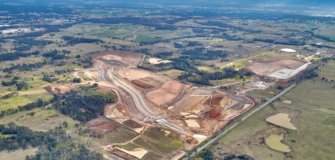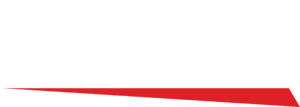Fleet Utilisation Pressure: A Looming Challenge for the Sector in 2025
Martin Sinclair Mar 23

The Hire and Rental Industry is an essential component in Australia’s construction and infrastructure sectors, providing the machinery and equipment that keep projects moving.
Continued supply, wage and material cost issues impacting the construction sector, mean that businesses in the hire industry, with exposure to the construction sector, will continue to experience volatility as many construction projects face delays or cancellations and key infrastructure projects reach completion, resulting in a decreased demand for rental equipment.
Slowing economic growth and persistent inflationary pressures mean all businesses should be wary of their financial position leading into 2025 as the availability of credit to refinance or sell down assets at strong resale values, may prove to be more difficult than previous years. This shift may pose challenges for some within the hire and rental industry, with underutilised assets straining cash flow.
Pickles, Australia’s largest auction group, undertakes analysis on the sale of assets across transport, construction and mining and other industries to provide insights into the status of the Australian marketplace.
A summary of the Pickles November 2024 review of several asset segments:
| Segment | Commentary |
| Finance Repossessions Update | The number of repossessed vehicles continues to rise. Two main factors contributing to this increase are: • ongoing cost-of-living pressures, and • reduced ability for owners to refinance. |
| Transport (including EV trucks) | The price of used trucks has been decreasing over the past few years, coming from an extremely inflated level in 2021/22. The main industry drivers include a shortage of drivers, fuel prices, increased supply of new trucks with normalised wait times, low profit margins and reduced movement. In contrast, sales of electric vehicles (EV) trucks have risen by 400%. Key factors contributing to this growth include infrastructure, fuel costs, scale, batteries and the choice between OEM and conversions. Secondary markets for used trucks remain immature and volatile. |
| Construction Equipment | Selling prices are falling in line with decline in gross sales. The main factors driving this include increase in new equipment supply exchange rates, infrastructure projects, a shortage of machine operators and diesel mechanics, ongoing component supply challenges and pressures from unions. |
| Agricultural Equipment | The average selling price of tractors has been decreasing from 2022 to the present year. Corporate-to-corporate asset sales continue to be strong and stable. Smaller farming businesses are more sensitive to fluctuations in price, interest rates, weather, and costs. Sales of new equipment have declined, and the market for smaller tractors is weak and occasionally unpredictable. |
| Mining Industry | Sales are currently flat. Equipment leads times have decreased, however the cost of new equipment has seen significant inflation. Mining operations are beginning to put pressure on contractors. Supply chain challenges have lessened, although labour shortages and rising labour costs remain ongoing concerns. |
| Motor Vehicles – Used Cars | New car deliveries continue to come through in high volumes to Fleet, Government, Corporate and Rental (FGCR) sectors, with FGCR customers expecting volumes to keep increasing month by month. OEMs and dealers are highlighting the availability of both new and used vehicles, which is exerting downward pressure on used vehicle prices. The Light Commercial segment has been the hardest hit over the past two years but has shown signs of stabilizing recently. Hybrid vehicles continue to outperform all other fuel types, while EVs and PHEVs remain less popular compared to others. |
Improved fleet management may be able to alleviate financial pressure/s on a hire and rental business through fleet optimisation, enhanced asset management and by embracing technology. However, the reality for businesses beginning to experience distress is that a successful turnaround plan is largely dependent upon strong and pro-active financial management as well as solid relationships with key stakeholder groups (eg. Financiers, employees, customers and suppliers) which allows business owners and Directors appropriate time to consider options available.
This is especially prevalent for Boards and management whose businesses are experiencing financial underperformance, maturing debt profiles or where significant decisions are required regarding the current business position and future strategy.
Additionally, Directors should be concerned around personal liability and responsibility for the company’s liabilities along with ensuring there is review of the options available/proposed.
The key tenets of implementing a successful turnaround plan are centred on establishing the following:
- Understand the current situation —What is the real position?
What is the current strategic, operational and financial position of the company? The current financial position includes bringing financial accounts and lodgements up to date that correctly quantify income tax liabilities, superannuation, PAYG withholding and other debts as well as possible.

Goal: Understand the current state of the business, the forecasts and key drivers of it.
- The Plan – Developing viable options for an improved business position
Documentation of how the position of the company will be maintained and/or improved while a solution to issues is determined.
This would include weekly cash flow forecast including funding requirements and ensure tax lodgements are current, but this can be managed by arrangement. Proactive management of the ATO and bank positions is most likely to achieve a better outcome.
Goal: Be conservative and clear on future requirements to continue to operate.
- What needs to be done – How the options are explored and executed
Implementation of the plan in a timely manner and ongoing monitoring of the actual benefits verses the planned benefits and outcomes.
Goal: Communicate these requirements clearly and concisely to key stakeholders.
It is imperative for hire and rental businesses to take proactive steps to mitigate the impact of any declining fleet utilisation. By learning from past experiences and adopting innovative solutions, operators can weather the storm, take advantage of opportunities and emerge as stronger businesses.
As we enter 2025, the economy may face greater uncertainty, which can provide challenges as well as opportunities for business which are well positioned.
If you have any questions or are looking to grow your fleet, please reach out to the team at HLB Mann Judd and they can assist you or provide an introduction to the team at Pickles Auctions.










